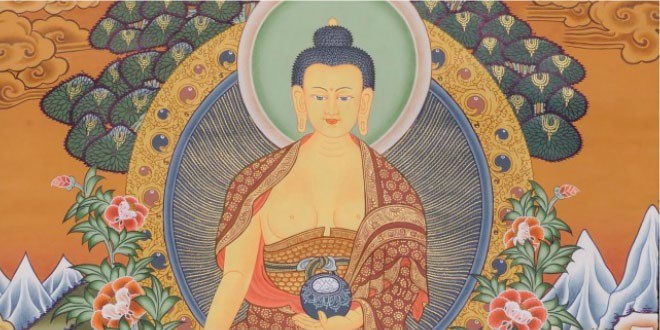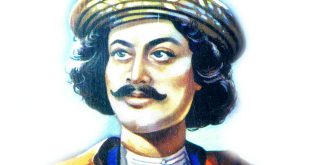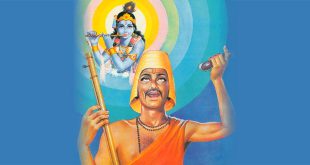Gautam Buddha: The history of Buddhism is the story of one man’s spiritual journey to Enlightenment, and of the teachings and ways of living that developed from it.
| Name: | Buddha, Siddhattha Gotama, Siddhārtha Gautama, Buddha Shakyamuni |
| Born: | Siddhartha Gautama – c. 563 BCE or 480 BCE – Lumbini, Shakya Republic (present-day Nepal) (according to Buddhist tradition) |
| Died: | c. 483 BCE or 400 BCE – Kushinagar, Malla Republic (according to Buddhist tradition) |
| Spouse: | Yasodharā |
| Children: | Rāhula |
| Parents: | Śuddhodana (father); Maya Devi (mother) |
| Known for: | Founder of Buddhism |
Gautam Buddha Biography:
The great saint of India Gautam Buddha was born in 565 B.C. at Lumbini. He came from a royal family. He was born to Shudhadan, the king of Kapilvastu. He was called Siddharth. Right from his childhood, Siddharth was a quiet and soft child. Other people’s problems affected him a lot. He did not want the royal comforts of the palace, and began to live alone. Siddharth was married to the beautiful princess Yashodhara, who bore him a son called Rahul.
Once, on an outing, he saw an old man, a patient and a dead body. Seeing so much suffering of the mortal body affected him deeply. He left the palace to search for truth. When he reached Gaya, he sat beneath a tree and meditated for many years. Finally, he attained enlightenment. He wandered from place to place preaching people about Truth.
Wherever he went, people heard him and started following him. People started calling him Gautam Buddha. Gautam, in his Baudh religion, preached non-violence and humanity. He said that we must not be attached to our body and this world. Buddha’s teachings were simple. After his death, his follower s spread his message of love to China, Japan, Sri Lanka and many other countries. Gautam Buddha attained salvation at Kushinagar in Nepal in 487 B.C.
Gautama Buddha in other religions:
- This Hindu synthesis emerged after the lifetime of the Buddha, under the pressure of the success of Buddhism and Jainism. In response to the success of Buddhism Gautama also came to be regarded as the 9th avatar of Vishnu. However, Buddha’s teachings deny the authority of the Vedas and the concepts of Brahman-Atman.
- In Sikhism, Buddha is mentioned as the 23rd avatar of Vishnu in the Chaubis Avtar, a composition in Dasam Granth traditionally and historically attributed to Guru Gobind Singh.
- Classical Sunni scholar Tabari reports that Buddhist idols were brought from Afghanistan to Baghdad in the ninth century. Such idols had been sold in Buddhist temples next to a mosque in Bukhara, but he does not further discuss the role of Buddha. According to the works on Buddhism by Al-Biruni (973–after 1050), views regarding the exact identity of Buddha were diverse. Accordingly, some regarded him as the divine incarnate, others as an apostle of the angels or as an Ifrit and others as an apostle of God sent to the human race. By the 12th century, al-Shahrastani even compared Buddha to Khidr, described as an ideal human. Ibn Nadim, who was also familiar with Manichaean teachings, even identifies Buddha as a prophet, who taught a religion to “banish Satan”, although does not mention it explicitly. However, most Classical scholars described Buddha in theistic terms, that is, apart from Islamic teachings.
Nevertheless the Buddha is regarded as a prophet by the minority Ahmadiyya sect, generally considered deviant and rejected as apostate by mainstream Islam. Some early Chinese Taoist-Buddhists thought the Buddha to be a reincarnation of Laozi. - Disciples of the Cao Đài religion worship the Buddha as a major religious teacher. His image can be found in both their Holy See and on the home-altar. He is revealed during communication with Divine Beings as son of their Supreme Being (God the Father) together with other major religious teachers and founders like Jesus, Laozi, and Confucius.
- The Christian Saint Josaphat is based on the Buddha. The name comes from the Sanskrit Bodhisattva via Arabic Būdhasaf and Georgian Iodasaph. The only story in which St. Josaphat appears, Barlaam and Josaphat, is based on the life of the Buddha. Josaphat was included in earlier editions of the Roman Martyrology (feast-day 27 November) – though not in the Roman Missal – and in the Eastern Orthodox Church liturgical calendar (26 August).
- In the ancient Gnostic sect of Manichaeism, the Buddha is listed among the prophets who preached the word of God before Mani.
- In the Bahai Faith, Buddha is regarded as one of the Manifestations of God.
 Kids Portal For Parents India Kids Network
Kids Portal For Parents India Kids Network








3 comments
Pingback: Animal Yoga for Kids – Let’s make our future generation fit and healthy. – TeamToddler
Pingback: Yoga Quotes For Students & Children - Rekhik
Pingback: Flowers: Gautama Buddha Poem For Kids - Kids Portal For Parents